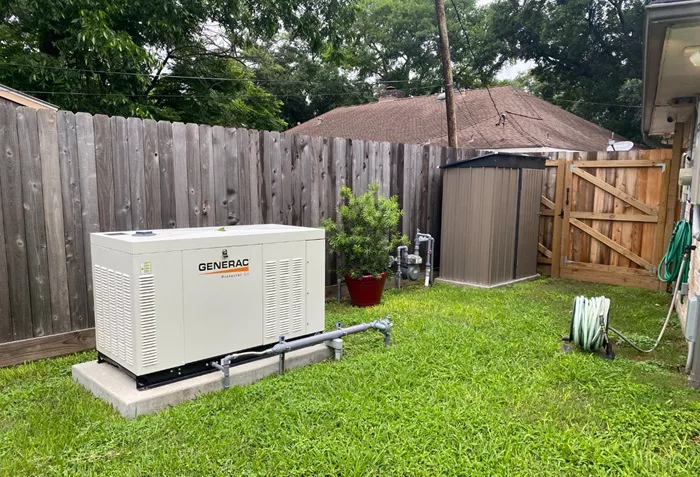Choosing the right generator for your home is crucial for ensuring reliable backup power during outages. With various types, sizes, and features available, selecting the best one can be overwhelming. This guide will help you understand the key factors to consider, the different types of generators, and how to pick the most suitable model for your needs.
Types of Generators for Home Use
Generators come in different designs, each with unique advantages. The three main types are:
Portable Generators
Portable generators are the most common choice for homeowners due to their affordability and versatility. They run on gasoline, propane, or diesel and can power essential appliances during short outages.
Pros:
- Lower cost compared to standby generators
- Easy to move and store
- Can be used for outdoor activities like camping
Cons:
- Require manual setup during outages
- Limited power output (typically 3,000–8,500 watts)
- Produce carbon monoxide, requiring outdoor use
Inverter Generators
Inverter generators are a quieter and more fuel-efficient version of portable generators. They produce clean, stable power suitable for sensitive electronics like laptops and smartphones.
Pros:
- Lightweight and compact
- Low noise levels
- Energy-efficient with adjustable engine speed
Cons:
- Higher cost than standard portable generators
- Limited wattage (usually 1,000–4,000 watts)
Standby Generators
Standby generators are permanently installed outside the home and automatically turn on during a power outage. They run on natural gas or propane and can power an entire house.
Pros:
- Automatic operation
- High power output (7,500–20,000 watts or more)
- Long lifespan with proper maintenance
Cons:
- Expensive upfront and installation costs
- Requires professional setup
Key Factors to Consider When Choosing a Generator
Power Output (Wattage)
The generator’s wattage determines how many appliances it can run simultaneously. To calculate your power needs:
Running watts: The continuous power needed for appliances.
Starting watts: Extra power required when devices like refrigerators or AC units start up.
Example Power Requirements
Refrigerator: 600–800 running watts, 1,200–2,000 starting watts
Sump pump: 800–1,500 running watts, 2,000+ starting watts
Central AC: 3,000–5,000 running watts
Choose a generator with at least 20% more capacity than your total calculated wattage.
Fuel Type
Generators use different fuels, each with pros and cons:
Gasoline: Easily available but has a short shelf life (6–12 months).
Propane: Stores longer and burns cleaner but may require large tanks.
Diesel: More efficient but noisy and emits strong fumes.
Natural Gas: Only for standby generators; requires a gas line.
Runtime
Runtime indicates how long a generator can run on a full tank. Portable models typically last 8–12 hours at 50% load, while standby generators can run for days if connected to a gas line.
Noise Level
Generators produce noise measured in decibels (dB).
Portable generators: 60–75 dB (similar to a vacuum cleaner)
Inverter generators: 50–60 dB (quieter, like a normal conversation)
Standby generators: 60–70 dB
If noise is a concern, opt for an inverter or soundproof standby model.
Transfer Switch Requirement
A transfer switch safely connects the generator to your home’s electrical system. It prevents backfeeding, which can damage appliances or harm utility workers.
Manual transfer switch: Requires you to switch power sources manually.
Automatic transfer switch (ATS): Used with standby generators for seamless power transition.
Top Generator Brands for Home Use
Honda
Honda generators are known for reliability, quiet operation, and fuel efficiency. Popular models include the Honda EU2200i (inverter) and EB10000 (portable).
Generac
Generac specializes in standby generators, offering high-capacity models like the Generac Guardian 22kW for whole-house backup.
Champion
Champion provides affordable portable and inverter generators, such as the Champion 100692 (dual-fuel) and Champion 200961 (inverter).
Westinghouse
Westinghouse offers reliable portable generators like the Westinghouse WGen9500DF (dual-fuel) with remote start.
Maintenance and Safety Tips
Regular Maintenance
- Change oil every 50–100 hours of use.
- Check air filters and spark plugs periodically.
- Run the generator monthly to prevent fuel system clogs.
Safety Precautions
- Always operate portable generators outdoors to avoid carbon monoxide poisoning.
- Use heavy-duty extension cords rated for generators.
- Never overload the generator—stick to its rated wattage.
Conclusion
By considering wattage, fuel type, runtime, and safety features, you can find the perfect generator to keep your home running during emergencies. Would you like recommendations based on your specific power needs? Let us know in the comments!

